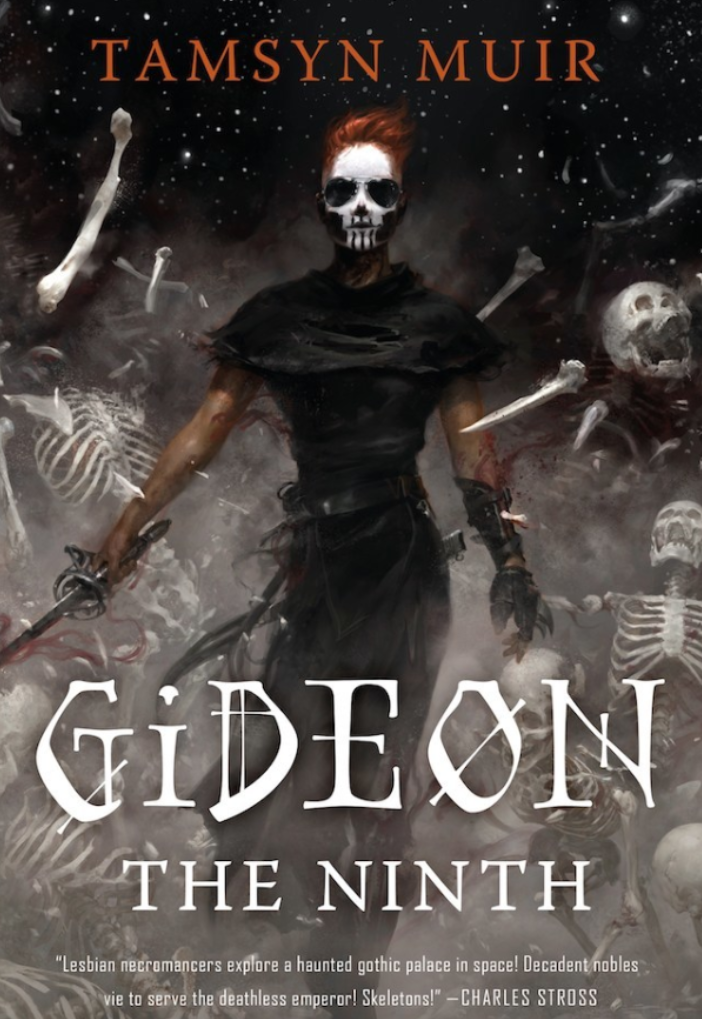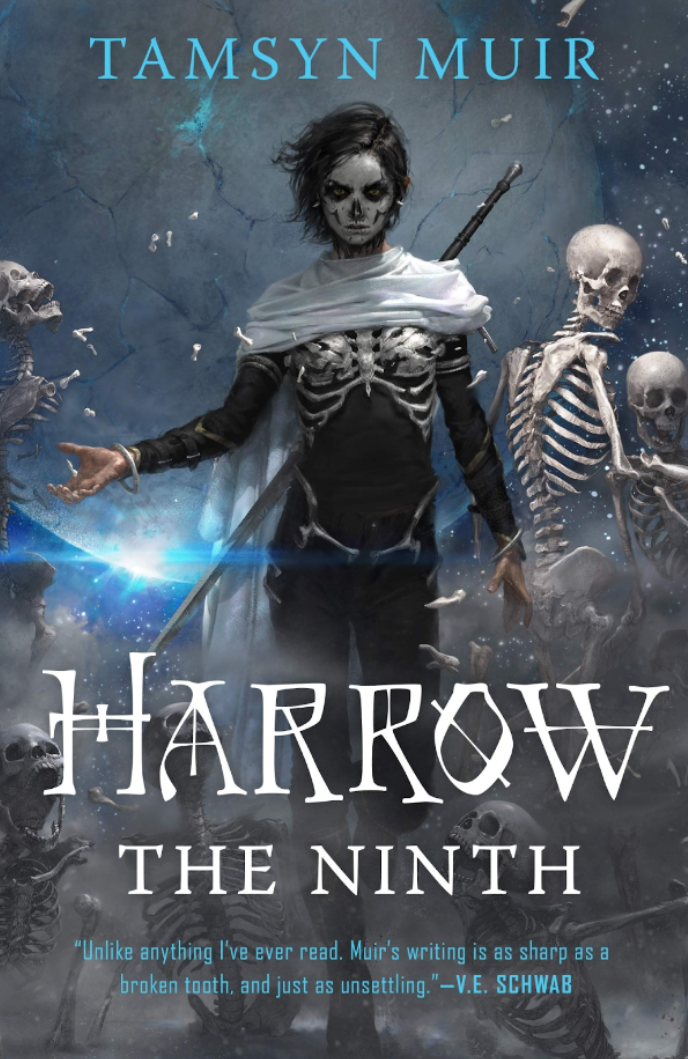The Locked Tomb Book Series Review (Pt. 1)
“Lesbian necromancers in space!” is an absurdly reductive tagline for any novel—and yet The Locked Tomb (TLT) is a series for which the absurdity feels appropriate. This simple exclamation is very effective at drawing in its intended audience (i.e. me) and preludes one roller coaster of a tetralogy. The series is heavily influenced by Tamsyn Muir’s Catholic background, along with Greek mythology and the infamous webcomic Homestuck. Such a referential text was at first somewhat intimidating, given my lack of familiarity with the referents. Knowing little about Jesus Christ, and even less about Vriska Serket, I had a thoroughly enrapturing reading experience despite being ill-versed.
As of this article’s publication, I am in the midst of reading Nona the Ninth, the third installation of TLT. In the meantime, I am desperate to tell someone (other than my long-suffering sister whom I force on the daily to endure my ramblings) about the chaos of the first two novels. I say, in the most endearing way: The Locked Tomb is actually insane.

The first book kicks off in the Empire of the Nine Houses. Gideon the Ninth (GtN) follows Gideon Nav, a thrall to the House of the Ninth taken in as an infant. Gideon attempts for the 87th time to escape the dreaded Ninth planet, only to be dragged back by her childhood nemesis Harrowhark Nonagesimus, heir to the Ninth House, this time with an audacious, mysterious, and enticing offer: Gideon’s freedom in return for helping Harrowhark in a competition against necromancers across the solar system to become a servant of the Emperor Undying.
Gideon Nav is confident, flirtatious, and headstrong. I was captivated by her cheeky narration, juxtaposed against the increasingly grim circumstances around her. It was great fun to see her serve as Harrow’s figurative guard dog with fluctuating levels of begrudgingness. GtN introduces a large cast of characters that I liked, but most of whom I lament were treated as disposable by the narrative.
Tensions nearly two decades old between Gideon and Harrowhark build up and implode in what fans have dubbed the “pool scene,” in which Harrow trades her usual aloofness for vulnerable confession. On its own, this scene is beautifully written and heavy with emotion. It is a pivotal moment in the characters’ relationship that disintegrates the fine line between love and hate. In the larger context of GtN, however, I found it too abrupt. It was not sufficient development to justify the epic sacrifice Gideon makes in the end, which consequently felt undeserved. GtN was overall enjoyable (and relatively uncomplicated; you’ll see what I mean), but is so far the weakest installment in the series. The novel’s shocking conclusion kept me on board for Harrow the Ninth, though.

Jarring, convoluted, and utterly incomprehensible upon first reading, Harrow the Ninth (HTN) is everything it sets out to be. Written half in second person and half in unreliable flashbacks, the second book of TLT is designed to be read at least twice in a row before it can be understood and appreciated. Between this book and the last, the main character switches from Gideon to Harrowhark (This pattern continues with another new protagonist in Nona the Ninth). Personally, the impressive execution of this book redeems those technical storytelling faults I found with GtN. It is impossible to say anything about the events of this novel without mentioning massive spoilers. (Stuff’s wild. You’re just gonna have to trust me on this.) HTN is a devastating exploration of grief, guilt, and devotion… that may or may not involve some minor god-killing and sensual magic arm-regeneration gore.
Harrowhark Nonagesimus was born from a horrific transaction that doomed the Ninth House to extinction—a tragedy among many which were not her crimes, but which she carries as though they were. Harrow lives not as a person, but as a purpose: to revive her House, so that her existence may be worth what it had cost. It seems Harrow resonates a lot with readers who, like her, have a lot of religious trauma, but all I can offer about her profoundly messed up childhood is: Girl, BIG oof.
I must confess I approached this series under the impression it was a romance. While the dynamic between Gideon and Harrow can be interpreted as romantic, The Locked Tomb is ultimately about so much more.
To end on a fun note, sprinkled throughout TLT are references to not just iconic literary works, but also internet memes like “None Pizza With Left Beef”, “My Body Is Ready”, and Llamas with Hats. I at first felt this was an annoying gimmick that took away from the dark tone, but it grew on me as I grew to understand TLT is, at its core, a humorous work. Since TLT takes place 10,000 years in the future, I imagine what we now regard as funny allusions would have made their way into the characters’ normal vernacular, their roots forgotten by all but the immortal Emperor himself.











